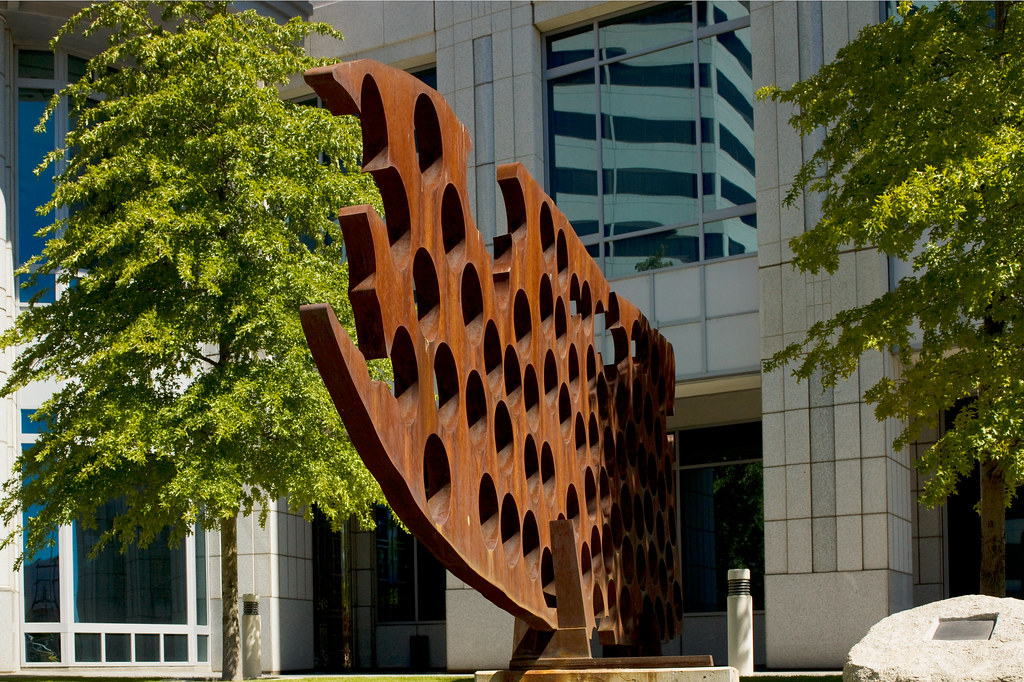21st Century Digital #4

Sculpture Perforated Object at Virginia Street entrance of Bruce R. Thompson U.S. Courthouse, Reno, Nevada. 20071
A plaque, attached to a large granite boulder, situated just to the south of the sculpture, reads as follows:
MICHAEL HEIZER
PERFORATED OBJECT
1996
Steel sculpture in two parts:
Virginia Street element: 27′ long, 9’9″ high, 5’5″ wide
Liberty Street element: 34′ long, 1’3″ high, 3’6″ wide
Perforated Object was inspired by an artifact discovered in 1936 in a excavation headed by anthropologist and archaeologist Robert F. Heizer, the artist’s father. The original artifact unearthed in the Humboldt Cave nearly 100 miles southeast of Reno, was carved from the horn of a bighorn sheep and “perforated” by 90 holes drilled through it. Created over 1500 years ago and left with the belongings of a Shoshone shaman. It’s purpose remains unknown, though it may have been of spiritual or ritual use.
This modern interpretation of the original object is constructed of bridge building steel and is approximately 450 times larger in size. The rough line of steel rings, placed on the opposite side of the building represent the negative space of the perforations, a reminder of the artifacts mystery. Perforated Object, fabricated at the artists Nevada studio, is simultaneously a contemporary public artwork and an emblem of the original early Native American inhabitants of the region.
Michael Heizer, the artist, was born in 1944 in Berkeley, California, and grew up visiting archaeological sites around the world. He is one of America’s most important and internationally acclaimed sculptors.
Commissioned for the United States by the General Services Administration
Art-in-Architecture Program
Source:
- Highsmith, Carol M, photographer. Image retrieved from the Library of Congress, www.loc.gov/pictures/item/2010720021/. (Accessed October 05, 2016.)
Notes:- Medium: 1 photograph: digital, TIFF file, color.
- Artist: Michael Heizer, 1996.
- Steel, measuring 9.5′ x 27′.
- Photographed as part of an assignment for the General Services Administration.
- Credit line: Photographs in the Carol M. Highsmith Archive, Library of Congress, Prints and Photographs Division.

